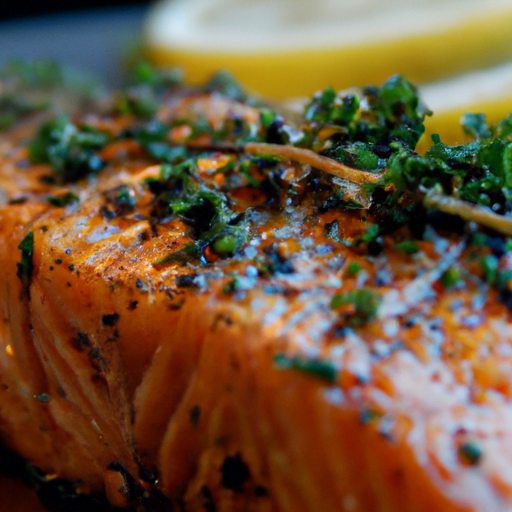You won’t want to miss a mouthwatering journey through the unique flavors of Alaskan cuisine. From the famous salmon bakes to the lesser-known birch syrup, exploring the culinary delights of the north promises to be an unforgettable experience. Whether you’re on board a cruise ship or venturing ashore, prepare to tantalize your taste buds with the diverse and delicious offerings that Alaska has to offer. Get ready to savor the richness of Alaskan cuisine as we take you on a delectable adventure through the flavors of this fascinating region.
Table of Contents
ToggleHistory of Alaskan Cuisine
Alaskan cuisine has a rich and diverse history, shaped by a variety of influences over the years. From the traditional dishes of Native Alaskans to the Russian and Gold Rush era influences, and finally to the modern interpretations of Alaskan cuisine, the culinary scene in this northernmost state of the United States is as unique as the land itself.
Native Alaskan Cuisine
Native Alaskan cuisine is deeply rooted in the traditions and practices of the indigenous people who have inhabited the region for thousands of years. This cuisine is characterized by the use of locally available ingredients such as fish, game meats, berries, and wild plants. Traditional cooking methods include smoking, drying, and fermenting to preserve food for the long winters.
Russian Influence
In the 18th century, Alaska was under Russian rule, and their influence left a lasting mark on the local cuisine. Russian dishes such as borscht, piroshki, and pelmeni made their way into the Alaskan culinary scene. Additionally, Russian Orthodox monasteries introduced new farming techniques and agricultural practices that brought a wider range of food options to the region.
Gold Rush Era Influence
The late 19th century gold rush brought a wave of immigrants to Alaska, and with them came their own culinary traditions. Miners from all over the world brought new ingredients and cooking techniques, resulting in a fusion of flavors and a diverse culinary landscape. Dishes like sourdough bread, stews, and hearty comfort foods became popular during this time.
Modern Alaskan Cuisine
Today, Alaskan cuisine has evolved to reflect not only its Native and Russian roots but also the influences of immigrants and modern culinary trends. Chefs in Alaska embrace the abundance of local ingredients and incorporate them into contemporary dishes that highlight the unique flavors of the region. The farm-to-table movement has also gained momentum, emphasizing the use of locally sourced, sustainable ingredients in restaurants across the state.
Traditional Alaskan Dishes
When it comes to traditional Alaskan dishes, there are several iconic ones that have become synonymous with the cuisine of this northern region.
Salmon Bakes
Salmon is undoubtedly one of the most beloved and essential ingredients in Alaskan cuisine. A popular way to cook salmon is by hosting a salmon bake, where the fish is slow-cooked on cedar planks over an open fire. This method imparts a smoky flavor and results in perfectly tender and flaky salmon.
Fry Bread
Fry bread is a staple in Native American cuisine, and it has also become a beloved part of Alaskan cuisine. This simple yet delicious flatbread is made by frying dough in oil or animal fat until it becomes golden brown and puffy. It can be served sweet with honey or savory with various toppings like ground meat, cheese, and salsa.
Muktuk
Muktuk is a traditional Inuit dish made from the blubber and skin of whales, typically the bowhead. It is often served raw, pickled, or fermented, and is considered a delicacy among the indigenous people of Alaska. Muktuk has a distinctive flavor and texture, with a rich, fatty taste that provides important nutrients for survival in the Arctic climate.
Akutaq (Eskimo Ice Cream)
Akutaq, also known as Eskimo ice cream, is a unique and traditional dessert made by Native Alaskans. It is a mixture of reindeer fat or tallow, berries, and sometimes sugar and fish. The ingredients are whipped together to create a creamy, smooth texture. While it may sound unusual to some, Akutaq is a beloved treat in Alaska and showcases the resourcefulness and creativity of the indigenous cultures.
Smoked Salmon
Smoking salmon is a time-honored tradition in Alaska, and it produces a flavorful and preserved fish that can be enjoyed year-round. The salmon is first cured in a brine mixture, then smoked over a wood fire. The result is a deliciously smoky and tender fish, perfect for enjoying on its own or as an ingredient in various dishes.
Reindeer Sausage
Reindeer sausage is a popular Alaskan food, particularly in the interior region of the state. It is made from a combination of reindeer meat, pork, and various spices. Reindeer sausage can be enjoyed grilled, pan-fried, or added to stews and soups. Its unique flavor and lean meat make it a favorite among locals and visitors alike.
Seafood in Alaskan Cuisine
With its vast coastline and rich fishing grounds, it’s no surprise that seafood plays a prominent role in Alaskan cuisine. The pristine waters of Alaska are home to an abundance of fish and shellfish, providing both sustenance and inspiration for many traditional and contemporary dishes.
Alaskan King Crab
Alaskan King Crab is highly prized for its succulent and sweet meat. These massive crustaceans are harvested from the icy waters of Alaska’s Bering Sea and the Gulf of Alaska. King crab legs are often steamed or boiled and served with melted butter for dipping, allowing the natural flavors of the crab to shine.
Halibut
Halibut is another popular fish found in Alaskan waters. Known for its firm white flesh and mild flavor, halibut is versatile and can be prepared in a variety of ways. It is often pan-fried, grilled, or baked, and can be served as a main course or used in fish tacos and chowders.
Rockfish
Rockfish, also known as Pacific snapper or Pacific cod, is a sustainable and delicious fish found in Alaskan waters. It has a firm texture and a slightly sweet, mild flavor. Rockfish is commonly used in fish and chips, fish tacos, and fish stews.
Dungeness Crab
Dungeness crab is a delicacy in many coastal regions of the United States, and Alaska is no exception. Known for its tender, sweet meat, Dungeness crab is often steamed or boiled and served with melted butter or in crab cakes and pasta dishes.
Shrimp
Alaska is home to several species of shrimp, including spot prawns and side stripe shrimp. These sweet and flavorful crustaceans are often enjoyed boiled, grilled, or sautéed and can be served as a standalone dish or as an ingredient in stir-fries, pasta, and salads.
Geoduck
Geoduck is a unique and highly sought-after seafood delicacy native to the Pacific Northwest, including Alaska. This large clam has a long neck and a protruding shell, resembling a creature from another world. Geoduck is prized for its sweet, tender meat and is typically enjoyed thinly sliced in sushi or sashimi.
Wild Game and Foraged Ingredients
Alaska’s vast wilderness provides ample opportunities for hunting and foraging, contributing to the popularity of wild game and foraged ingredients in the local cuisine. The traditional food practices of the indigenous cultures have long celebrated the sustainable use of these resources.
Moose
Moose meat is a staple in Alaskan cuisine, prized for its lean and flavorful qualities. It can be prepared in various ways, including grilling, roasting, and stewing. Moose is often used in dishes like moose stew and moose chili, where the natural richness of the meat shines.
Caribou
Caribou is another iconic game meat found in Alaska. It has a distinct flavor profile, lean and slightly gamey. Caribou meat is versatile and can be prepared in numerous ways, from grilling and smoking to slow-cooking in stews.
Bear
While it may not be as commonly consumed as moose or caribou, bear meat has been part of Alaskan cuisine for centuries. In the past, indigenous cultures relied on bears for sustenance, utilizing the meat in stews and soups. Today, bear meat is less readily available due to restrictions, but it can still be enjoyed by those who participate in legal hunting activities.
Wild Berries
Alaska is home to a wide variety of wild berries, including blueberries, lingonberries, salmonberries, and cloudberries. These flavorful berries are harvested in the summer months and are used in a myriad of ways, from jams and pies to sauces and desserts. Foraging for wild berries is a popular activity in Alaska, and the bounty of these fruits adds a burst of color and flavor to the local cuisine.
Fiddlehead Ferns
Fiddlehead ferns are the young, tightly coiled shoots of certain fern species. They are foraged in the early spring, and their distinctive appearance and delicate flavor make them a sought-after ingredient in Alaskan cuisine. Fiddlehead ferns are often pan-fried, sautéed, or used in salads and stir-fries.
Spruce Tips
The tender, bright green shoots of spruce trees, known as spruce tips, are harvested in the spring and used in a variety of culinary applications. They have a unique citrusy and resinous flavor that adds depth to dishes like sauces, marinades, and baked goods. Spruce tip-infused syrups and oils are also popular ingredients in Alaskan cuisine.
Farm-to-Table Movement in Alaska
Alaska’s size and geography pose unique challenges when it comes to sourcing fresh produce. However, the state has seen a rise in the farm-to-table movement as more people recognize the benefits of supporting local farmers and businesses.
Local Farmers and Markets
Despite the short growing season, farmers in Alaska are finding creative ways to cultivate a wide range of crops. Local farms produce an array of fresh vegetables, including potatoes, carrots, onions, greens, and root vegetables. Farmers’ markets are an excellent place to discover locally grown produce and connect with the people responsible for growing it.
Sustainable Fishing Practices
Alaska’s fishing industry is known for its commitment to sustainability. Strict regulations and careful management have helped ensure the long-term health of fish stocks, making Alaskan seafood a responsible choice for consumers. By supporting sustainable fishing practices, Alaskans are able to enjoy fresh seafood while also protecting the environment.
Farmers’ Markets in Anchorage
Anchorage, the largest city in Alaska, boasts a thriving farmers’ market scene. These markets offer a wide array of fresh produce, locally made products, and artisanal goods. Visitors and locals alike can peruse the stalls, talk to the farmers and vendors, and sample the flavors of Alaska.
Community Supported Agriculture (CSA) Programs
Community Supported Agriculture programs have gained popularity in Alaska, allowing consumers to directly support local farmers by purchasing shares of the season’s harvest. Participants in CSA programs receive a box of fresh produce each week, enabling them to enjoy a wide variety of locally grown fruits and vegetables.
Unique Ingredients of Alaskan Cuisine
Alaska’s unique natural environment offers a range of ingredients that are not commonly found in other parts of the world. These ingredients contribute to the distinct flavors and identity of Alaskan cuisine.
Birch Syrup
Birch syrup is a syrup made from the sap of birch trees. It has a flavor similar to maple syrup but with a distinctive earthy, slightly spicy note. Harvesting birch sap and producing syrup is a labor-intensive process, contributing to its rarity and value. Birch syrup is used as a natural sweetener and adds a complex flavor profile to both sweet and savory dishes.
Fireweed
Fireweed is a vibrant wildflower that grows abundantly in Alaska. Not only is it visually stunning, but it also has culinary uses. The tender shoots and young leaves of the fireweed plant can be harvested and used in salads, while the flowers can be made into jams, jellies, and herbal teas. Fireweed honey, derived from the nectar collected by bees from fireweed flowers, is a local delicacy prized for its unique flavor.
Kelp
Alaska’s cold and nutrient-rich waters are home to a wide variety of seaweed, with kelp being one of the most commonly used. Kelp is versatile and can be eaten fresh, pickled, or dried. It is rich in minerals and is often used in salads, soups, and as a seasoning in various dishes.
Salmon Roe
Salmon roe, also known as salmon caviar, is a delicacy that highlights the prominence of salmon in Alaskan cuisine. The bright orange or red eggs are prized for their distinct flavor and pop when bitten into. Salmon roe is often enjoyed with sushi, as a garnish for canapés, or as an accompaniment to seafood dishes.
Alaskan Honey
Alaskan honey is celebrated for its unique flavors, thanks to the variety of wildflowers found in the state. Bees feed on flowers such as fireweed, clover, and wild berries, resulting in a rich and complex honey. Alaskan honey is used in baking, cooking, and as a natural sweetener for teas and beverages.
Alaska Grown Potatoes
The cool climate and fertile soil of Alaska are ideal for potato cultivation. Alaska grown potatoes are renowned for their exceptional quality and flavor. From buttery Yukon Golds to colorful fingerling varieties, these locally grown potatoes are a key ingredient in many Alaskan dishes, including stews, soups, and hearty side dishes.
The Influence of Indigenous Cultures
The indigenous cultures of Alaska have a profound influence on the local cuisine. Each culture’s unique traditions and culinary practices contribute to the rich tapestry of flavors and ingredients found in Alaskan dishes.
Inupiat Cuisine
The Inupiat people, who are native to northern Alaska, rely heavily on the resources of the Arctic Ocean for their sustenance. Their cuisine includes a variety of seafood, such as whale, walrus, seal, and fish. Traditional cooking methods, such as boiling, smoking, and fermenting, are used to preserve food for the long winters.
Aleut Cuisine
The Aleut people, whose homeland stretches across the Aleutian Islands, have a cuisine that emphasizes the use of marine resources. Their diet includes seafood, sea mammals, and game birds. Smoked and dried fish are staples in Aleut cuisine, and they are often enjoyed with traditional fermented foods like sea urchin roe and seal oil.
Athabascan Cuisine
The Athabascan people, who live in the interior regions of Alaska, have a diet that revolves around game meats, such as moose, caribou, and bear. They also forage for berries and gather plants like fiddlehead ferns and spruce tips. Traditional cooking methods include boiling, steaming, and smoking, and the use of dried meats and fish is common.
Tlingit Cuisine
The Tlingit people, who primarily inhabit the southeastern region of Alaska, have a cuisine that showcases the abundant seafood and fresh water resources of their coastal homeland. Salmon and halibut are important staples, often grilled or smoked. Dried and fermented foods, such as herring eggs, seaweed, and berries, are also prominent in Tlingit cuisine.
Yupik Cuisine
The Yupik people, who live in the southwestern region of Alaska, have a cuisine that reflects their reliance on both the land and sea. Their traditional diet includes a variety of fish, such as salmon and whitefish, as well as marine mammals like seals and whales. Traditional preparation methods, such as boiling, fermenting, and drying, are used to preserve food throughout the year.
Fusion and Contemporary Alaskan Cuisine
Alaskan cuisine is not just limited to traditional dishes and indigenous influences. The state’s unique culinary landscape has also been shaped by a variety of fusion flavors and contemporary interpretations of traditional recipes.
Asian Influence
The proximity to Asia and the historical connections between Alaska and countries like Japan and Korea have led to the incorporation of Asian flavors and techniques into Alaskan cuisine. Asian fusion dishes featuring ingredients like soy sauce, ginger, and sesame oil can be found in many Alaskan restaurants.
Pacific Northwest Fusion
The Pacific Northwest’s culinary traditions have greatly influenced Alaskan cuisine. Incorporating ingredients like wild mushrooms, hazelnuts, and locally sourced seafood, Pacific Northwest fusion dishes showcase the bounty of the region and the reverence for sustainable and seasonal ingredients.
Scandinavian Flavors
Alaska’s history as a Russian territory also introduced culinary traditions and flavors from Scandinavia. Scandinavian influences can be seen in dishes like pickled herring, lefse (potato flatbread), and even in the use of dill, a popular herb in Scandinavian cooking.
International Influences
With a diverse population and a history of immigration, Alaskan cuisine incorporates flavors and techniques from around the world. Thai, Mexican, Italian, and other international cuisines have found their place in the Alaskan culinary scene, creating a vibrant and diverse food culture.
Modern Interpretations of Traditional Dishes
Chefs in Alaska are known for their innovative and creative approaches to traditional recipes. They take traditional Alaskan ingredients and put a modern twist on them, creating dishes that pay homage to the past while embracing current culinary trends. This blending of tradition and innovation results in a truly unique dining experience.
Alaskan Beverages and Spirits
In addition to its food, Alaska is also known for its unique beverages and spirits that showcase the flavors of the region.
Alaskan Craft Beers
Alaska boasts a thriving craft beer scene, with numerous breweries crafting a wide variety of beers. From hoppy IPAs to rich stouts, Alaskan craft breweries use local ingredients like spruce tips, wild berries, and even smoked malts to create distinct and flavorful brews that reflect the spirit of the state.
Birch Sap and Spruce Tip Infused Spirits
The use of locally foraged ingredients extends to Alaska’s spirits as well. Birch sap, with its subtle sweetness, is used to create birch sap-infused vodkas and liqueurs, adding a unique flavor profile to cocktails. Spruce tips, with their citrusy and piney notes, are macerated in spirits to create spruce tip-infused liquors.
Smoked Salmon Vodka
Building on the love for salmon in Alaskan cuisine, some innovative distilleries have created smoked salmon vodka. This distinctive spirit infuses the smoky essence of salmon into the vodka, offering a one-of-a-kind flavor experience.
Local Berry Wines
The abundance of wild berries in Alaska provides ample opportunities for winemakers to create unique berry wines. From blueberry to cranberry and everything in between, local wineries produce a wide range of fruit wines that showcase the bright flavors and natural sweetness of Alaska’s wild berries.
Fireweed Mead
Mead, an ancient fermented honey beverage, has found its place in Alaskan drinks. Fireweed honey, with its distinct flavor, is used to create fireweed mead, a drink that balances sweetness with herbal and floral notes. This refreshing beverage is enjoyed by locals and visitors alike.
Where to Experience Alaskan Cuisine
Whether you are a visitor to Alaska or a local looking to explore the diverse culinary scene, there are plenty of places to indulge in Alaskan cuisine throughout the state.
Restaurants in Anchorage
Anchorage, as the largest city in Alaska, boasts a vast array of restaurants that showcase the best of Alaskan cuisine. From fine dining establishments to casual eateries, there is something for every taste and budget. Restaurants in Anchorage often highlight locally harvested seafood, wild game meats, and seasonal produce, providing an authentic Alaskan dining experience.
Juneau’s Seafood Scene
Juneau, the state capital, is another city that offers a vibrant seafood scene. The city’s waterfront location allows for fresh and locally caught seafood to be featured prominently on menus. From seafood shacks to upscale seafood restaurants, Juneau is a paradise for seafood lovers.
Food Festivals and Events
Throughout the year, Alaska hosts various food festivals and events that celebrate local cuisine. The Alaska State Fair in Palmer showcases the best of Alaska’s agriculture, including fresh produce and locally made products. The Sitka Seafood Festival and the Cordova Iceworm Festival are just a few examples of events that highlight the bounty of Alaska’s waters.
Alaska Native Heritage Center
For a deeper understanding of the indigenous cultures and their contributions to Alaskan cuisine, a visit to the Alaska Native Heritage Center is highly recommended. The center offers immersive experiences, including storytelling, traditional performances, and demonstrations of traditional food practices.
Cooking Classes and Culinary Tours
For those interested in a more hands-on approach, cooking classes and culinary tours are available in various cities across Alaska. These experiences offer the opportunity to learn about and taste the flavors of Alaskan cuisine while engaging with local chefs and producers.
Exploring Alaskan cuisine is a journey through a land of stunning landscapes and rich traditions. From the traditional dishes rooted in the practices of Native Alaskans to the fusion flavors influenced by international cuisines, Alaska’s culinary scene is as diverse as the people who call this northernmost state home. Whether you’re enjoying a salmon bake under the midnight sun or savoring the unique flavors of local beverages, Alaskan cuisine is an adventure for the taste buds that shouldn’t be missed.





